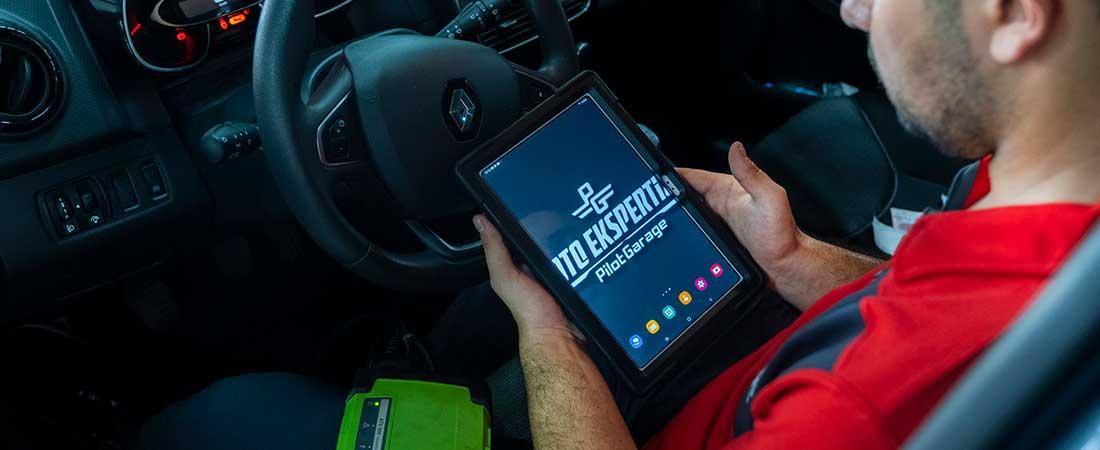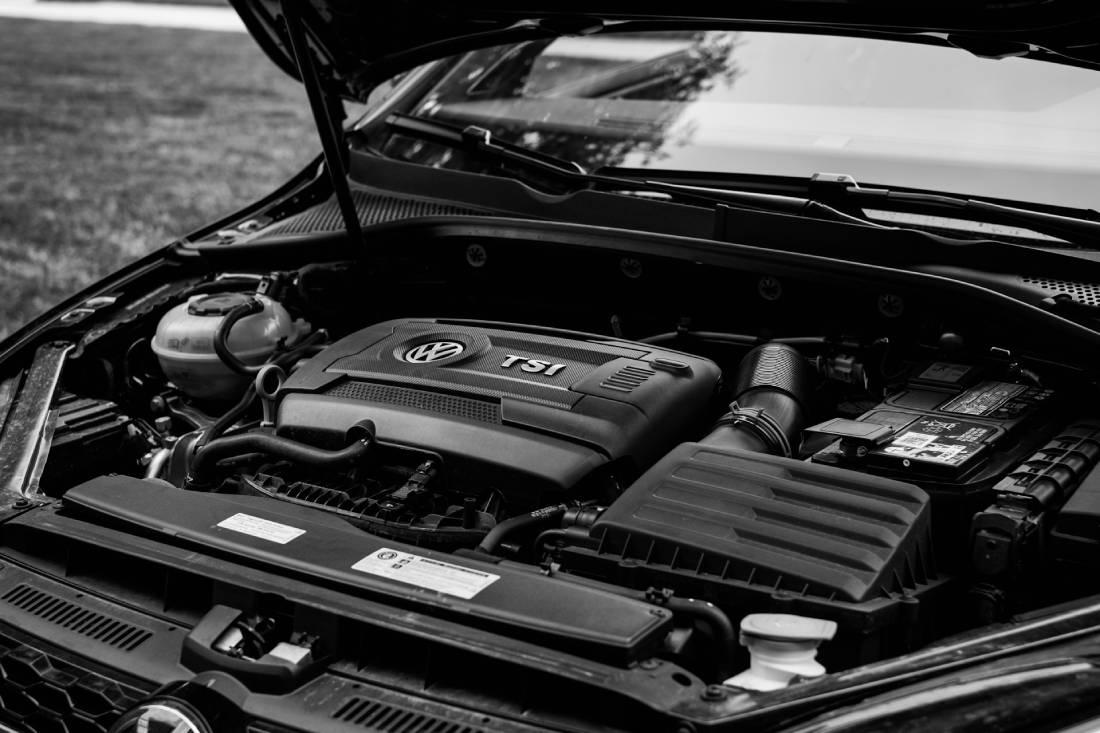
- Why Does the Tire Pressure Monitoring System Light Up?
- Tire Pressure System Sensor Failure
- Sensor Battery Failure
- Defective ABS or ECU
- Ambient Temperature Change
- Tire Change or Repair
- Low Pressure in the Spare Tire
- What are the Causes of Tire Pressure Drop?
- What Should the Tire Air Pressure Be?
- How to Learn Tire Air Pressure?
- What Are the Effects of Low Tire Pressure?
- What Are the Effects of High Tire Pressure?
- What are the Advantages of Tire Pressure Monitoring System?
- What Should Be Done in Case of Tire Pressure Control System Failure?
Every part and system in the vehicles allows the vehicles to be used safely. Tires are one of the most important parts of vehicles. A problem or damage to the tires that carry the entire load of the vehicle and make contact with the ground may cause undesirable situations.
Therefore, it is important to follow the current condition of the tire to ensure tire safety, which is of vital importance. The tire pressure gauge makes it easier for drivers and vehicle owners at this point. Tire pressure monitoring system (TPMS) is the indicator that shows if the tire pressure is low. In this article, we will answer the questions of what is the tire pressure monitoring system, why it lights up, in more detail.
The tire pressure monitoring system is an indicator that instantly displays the pressure and temperature of the tires. It is positioned between the indicators on the steering side of the vehicles. A tire pressure sensor is placed inside the tire to measure the pressure and temperature of the tire.
This sensor is attached by clamping to the hubcap or the insole section of the tire. Thanks to the sensor that measures the temperature and pressure of the tire, the condition of the tire is instantly seen from the tire pressure monitoring system located in the vehicle. This system is called Tire Pressure Monitoring System. Since the English equivalent is Tire Pressure Monitoring System, it is briefly expressed as TPMS.
It appears with an upside-down horseshoe-like symbol on the display screen. There are 2 types of Tire Pressure Monitoring Systems, Indirect, and Direct. Indirect TPMS evaluates the tire lap information received from the vehicle's EPS and ABS systems and displays the change resulting from the lap difference to the driver as low tire pressure information. Direct TPMS measures the pressure inside the tire as a live value. When the system detects a drop in tire pressure, it notifies the driver.
TPMS, which indicates whether the tire pressure is low or not, is a mandatory system in all new vehicles after 2007. Thanks to this battery-operated system, the vehicle communicates with the drivers. If pressure is detected below normal values, the system quickly switches to the warning state.
Why Does the Tire Pressure Monitoring System Light Up?
In some cases, the tire pressure monitoring system on the vehicle lights up and sends a warning to the driver. There may be different reasons for the indicator to light up.
One of the most important reasons for the tire pressure indicator to illuminate is low tire pressure. Especially when the vehicle is started, the warning light comes on, indicating that the tire pressure has decreased.
In this case, it is useful to measure the tire air pressure. If the tire pressure is within normal values and the indicator light is still on, the following reasons may have caused the light to come on. It needs to be checked.
Tire Pressure System Sensor Failure
Sensors installed in vehicle tires are prone to malfunction. The warning light may have been lit due to a sensor malfunction. Sensor failure usually occurs due to wear and tear on the seals, seals, valve heads, or core of the sensor depending on the time of use.
Another factor that causes the sensor to malfunction is the flat repair sealing material. There is only nitrogen and lava in the tire. The presence of another substance leads to the malfunction of the sensor. Any substance that gets mixed into the tire during the repair of a flat tire first causes the sensor to malfunction.
Sensor Battery Failure
The tire pressure system sensor has a built-in battery. When the vehicle is moving, the sensor detects this movement and sends a signal to the driver. When the vehicle is parked, the sensor switches to sleep mode and turns itself off. In this way, the service life of the sensor is extended. The life of the sensor varies from 5 to 10 years depending on the use of the vehicle. If the battery has expired, the warning indicator lights up. Since the battery inside the sensor is built-in, battery replacement cannot be performed, a new sensor must be installed.
Defective ABS or ECU
ECU, which is one of the most important parts of motor vehicles, and ABS, which is part of the wheel speed sensor, can cause the tire pressure indicator to light up.
Ambient Temperature Change
The temperature change causes the tire pressure to decrease or increase. Especially in cold weather, when the temperature drops by 10 degrees, there is a 1 PSI decrease in tire pressure. Heating tires in hot weather causes the air pressure to increase by 3 PSI. These changes cause the warning light to come on.
Tire Change or Repair
Removing and reinstalling the tire for repair purposes may require a re-learning process in the vehicle. In this case, the warning light turns on. However, usually after driving the vehicle at a constant speed for 5-10 minutes, the relearning process is completed. In cases where 5-10 minutes of driving does not affect the re-learning process, technician intervention may be required.
Installing a tire that does not have a tire pressure sensor during a tire change will also cause the tire air pressure indicator to light up.
Low Pressure in the Spare Tire
Many spare tires do not have a tire pressure sensor. This causes the warning light to come on. A spare tire equipped with a tire pressure sensor will also cause the indicator to illuminate if the tire pressure is low.
What are the Causes of Tire Pressure Drop?
There are multiple factors that cause tire pressure to drop. The causes of tire pressure drop can be listed as follows:
- Weather conditions
- Not using the tire or vehicle for a long time
- Air release of the rim
- Valve damage or incorrect installation of the installation
- Rim problems
- Insufficient inflation
- Overload
- Tire age
- Over-tightened lug nuts
- Ventilation system problems
- Floors that force the tire
What Should the Tire Air Pressure Be?
Tire pressure is recommended to be between 32 and 35 PSI in passenger cars. However, because there are many factors that reduce or increase the tire air pressure, the pressure level of the tire may change. To ensure safe driving and prevent tire wear, it is important to monitor tire pressure and ensure it is within the recommended PSI range.

How to Learn Tire Air Pressure?
In order to find out the tire air pressure, it is necessary to make measurements with a pressure meter. In order to accurately measure the tire pressure, it is useful to pay attention to the following details:
- Measuring the tire pressure in a cold environment or in the morning
- If the vehicle is in motion, measure it 30 - 45 minutes after stopping the vehicle
- Parking the vehicle on flat ground
The recommended air pressure value for the tire is extremely important for comfortable and safe driving. If you are wondering where the tire pressure level is written and where you can I find it, you can look at the side of the tire or examine the user manual prepared by the manufacturer for the tire.
What Are the Effects of Low Tire Pressure?
Low tire pressure negatively affects the tire and the vehicle in many ways. For this reason, care should be taken to ensure that the tire pressure is within the recommended values. The effects of low tire pressure can be listed as follows:
- Steering can be difficult, as it reduces the tire's grip.
- The cornering performance of the vehicle is adversely affected and the braking distance increases.
- Fuel cost rises.
- Driving comfort decreases.
- Low tire pressure causes tire wear, as it causes the tire to flex.
What Are the Effects of High Tire Pressure?
The effects of high tire pressure can be listed as follows:
- High tire pressure causes a decrease in handling ability. Therefore, driving safety may be compromised.
- The sidewall friction of the tire increases.
- Tire tread wears out quickly and tire life is shortened.
- It is more quickly affected by small sharp objects.
- The center of the tire is worn.
- As fuel use increases, fuel costs also increase.
What are the Advantages of Tire Pressure Monitoring System?
The advantages of the Tire Pressure Monitoring System can be listed as follows:
- Sudden changes in tire pressure can be monitored instantly and risks can be avoided.
- It provides the opportunity to save fuel and fuel costs as it allows the tire pressure to be kept under control.
- It reduces emissions.
- It helps to extend the service life of the tires.
- It provides easy acceleration of vehicles and helps to increase performance.
What Should Be Done in Case of Tire Pressure Control System Failure?
It is necessary to get professional help for Tire Pressure Control System failures. If the tire air pressure is at a standard level and the reset process has been performed, but the warning light is still on, it would be useful to get support from a service that has a TPMS coding device or an auto expertise company. In cases of sensor failures, a new sensor must be purchased and identified to the tire. The TPMS coding device allows the detection of the defective sensor and the reading of the code on the sensor. In addition, malfunctions in the TPMS module are also deleted with this coding device.





